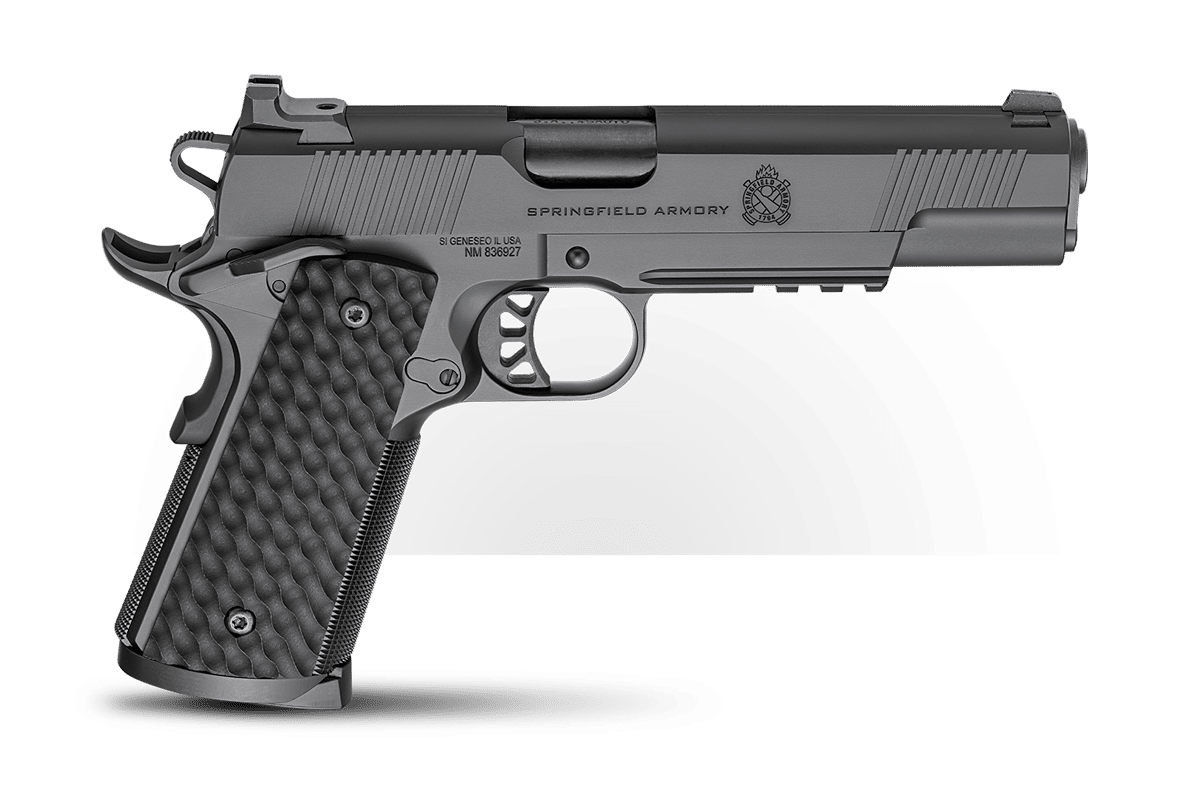Ayoob: How to Shoot a Pistol Using the Classic Weaver Stance
February 27th, 2022
9 minute read
Editor’s Note: This article on shooting a pistol using the Weaver Stance is the second in a four-part series by Massad Ayoob on the major two-handed shooting stances. You can find part one here. You are also encouraged to read Ayoob’s Modified Weaver shooting stance article and his Isosceles shooting stance article.
In the article “Your Shooting Stance: Is Everything You Know Wrong?”, we discussed different two-handed shooting stances and why each has valid applications. We promised to delve into each technique in depth. Let’s start with the Classic Weaver stance.
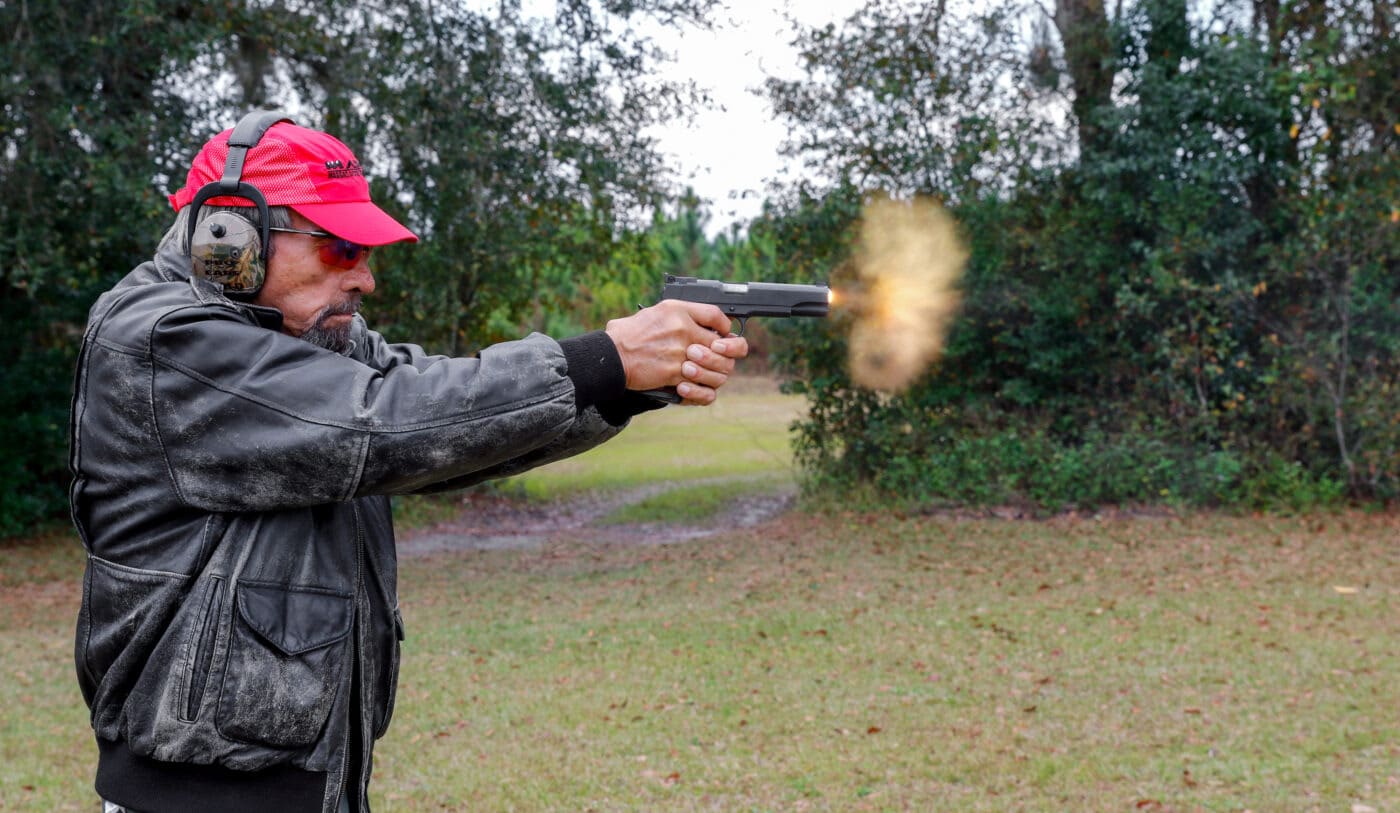
Why Is It Called the Weaver Stance?
I call it Classic Weaver with a capital “C” because many have erroneously conflated the Weaver concept with any general two-handed stance, and because many instructors have come up with their own “modified Weaver” stances.
For example, historians generally agree that in 1865 when Wild Bill Hickok killed his opponent David Tutt with a famous single long-range shot across the town square in Independence, Missouri, he employed both arms to stabilize his .36 caliber Navy Colt revolver. Some remembered him resting the barrel across his forearm, others nestling his gun hand in the crook of an upraised elbow, but none of those descriptions come close to what we would call a Weaver stance today.
A Brief History
In the second quarter of the twentieth century, experts like J. Henry Fitzgerald in the United States and W.E. Fairbairn in England taught two-handed holds, but only for distance shooting with handguns. Fitzgerald’s book “Shooting,” published in 1930, showed him demonstrating something remarkably like the Weaver stance of today.
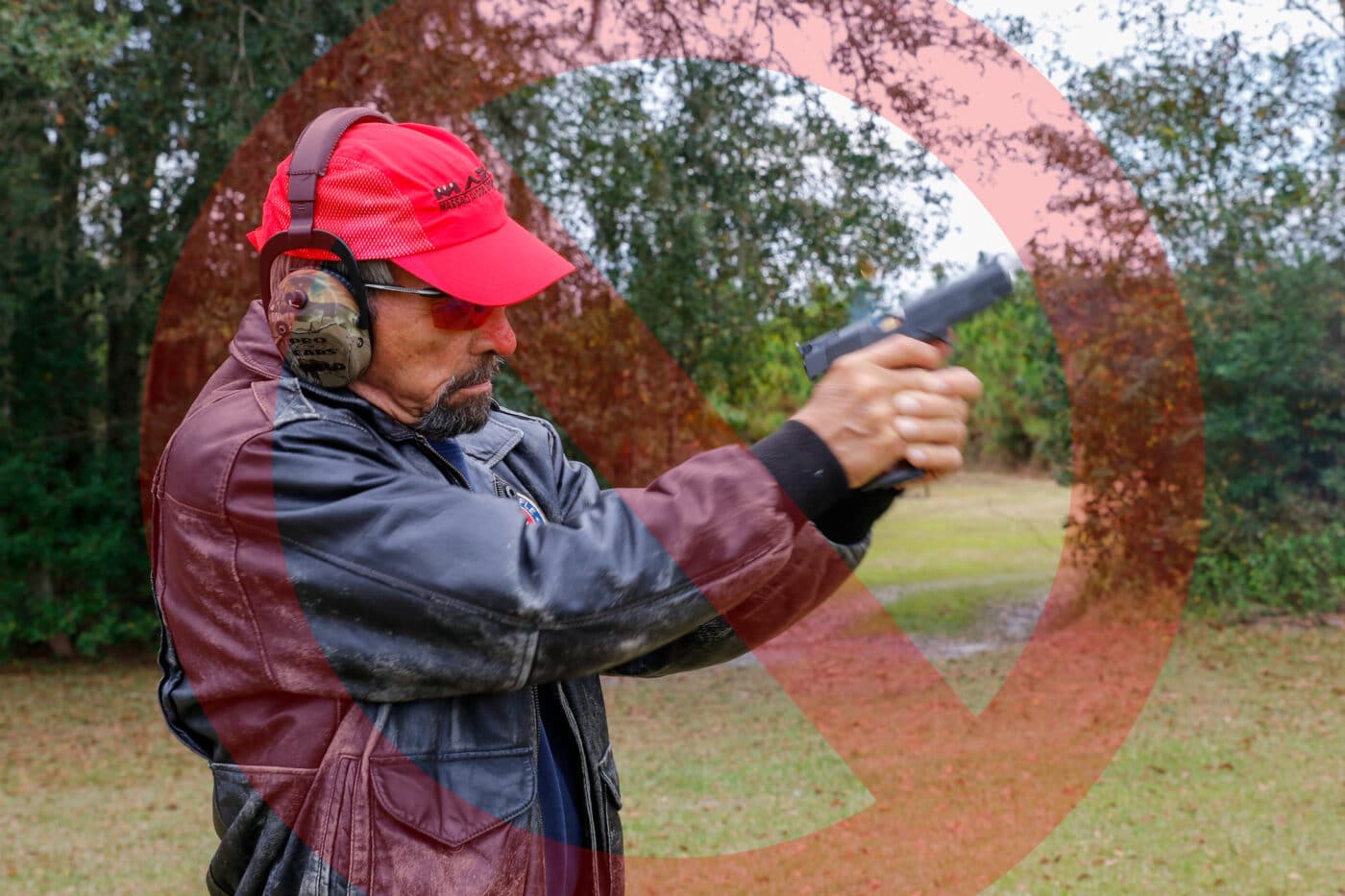
In the late 1950s in California, Lt. Col. John Dean “Jeff” Cooper, USMC ret., sought to create a competition format in simulated gunfighting to encourage the development of better skills and equipment. He began with The Leatherslap, a quick-draw contest that emphasized hitting targets faster than one’s opponent. By the early 1960s, his concept had already borne fruit.
So, Who Created the Weaver Stance?
The first of the many great masters who emerged from those critical days was a Los Angeles County Deputy Sheriff named Jack Weaver. Noticing that everyone was shooting one-handed at distances of plus/minus seven yards and often missing, Weaver was the first to take a two-handed grasp, and bring his 6” barrel revolver to eye level for quick aim. His first overall win was so decisive it changed Col. Cooper’s thinking on the matter dramatically.
Cooper gave credit to his associate John Plahn for breaking down and analyzing what Weaver was doing. He observed that the tall deputy shot with both elbows bent, the gun hand pushing forward and the support hand pulling back, with an equal and opposite pressure, with his gun-side foot a little back from his support side foot while most of his competitors were placing their feet square vis-à-vis the target.
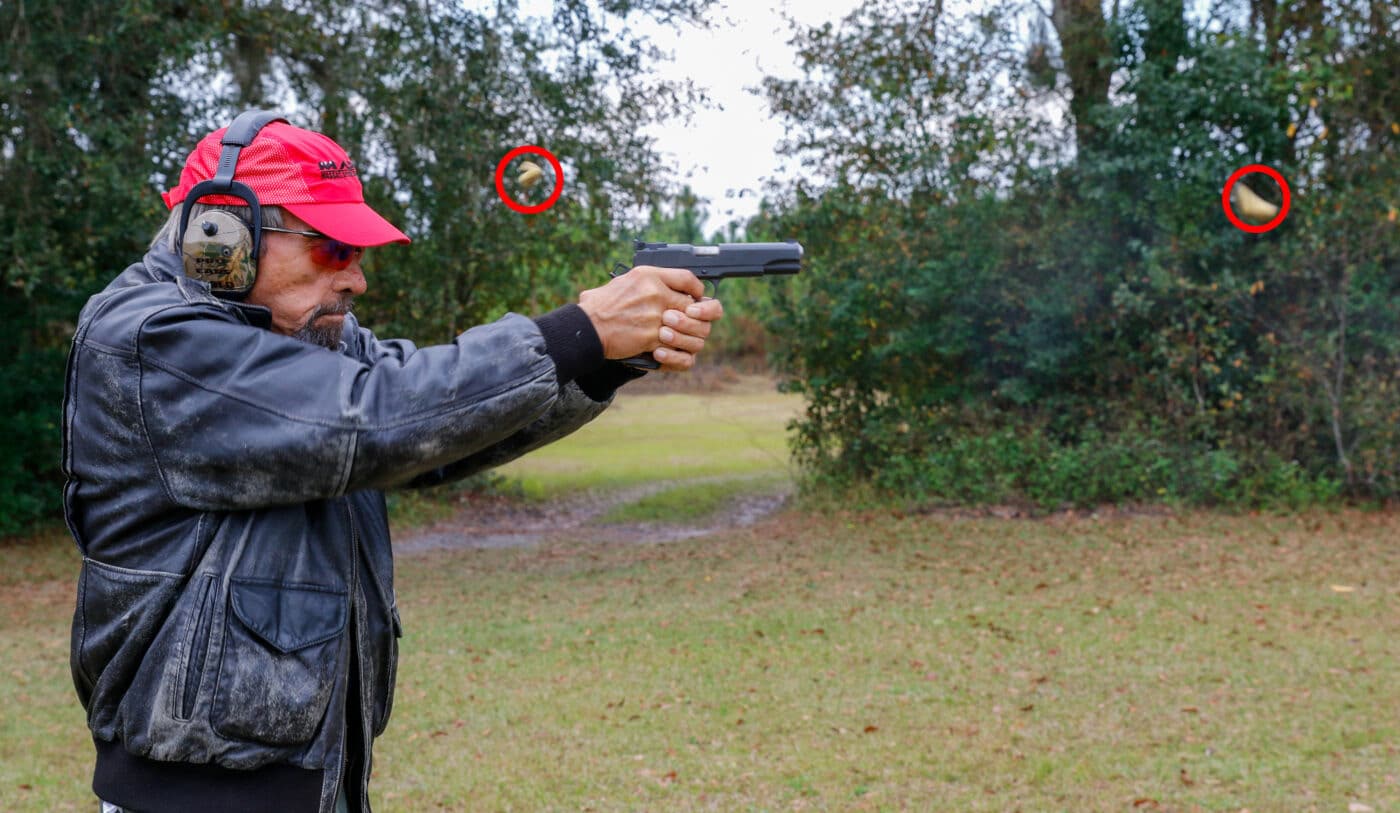
Writing for Guns & Ammo magazine along with other publications, and writing books on the topic, Cooper vaulted to the forefront of “spreading the doctrine.” He became the high priest of what he defined as the Weaver stance. When I spent a few hours with him one-on-one in the mid-1970s at the facility that would become the legendary Gunsite training complex, Jeff told me explicitly that he favored about 40-45 lbs. of pressure on the push-pull between the hands, “… about like wringing out a wet washcloth.” He would later state emphatically that this isometric tension was the essence of the Weaver stance.
Time went on. The competition Cooper had begun in California burgeoned into IPSC, the International Practical Shooting Confederation, which would engender offshoots such as IDPA, the International Defensive Pistol Association. It would also absolutely change the face of defensive pistol shooting for police, for military, and for the armed citizenry.
Interpretive Shooting Stance Factors
Different shooters perform Weaver differently. As to foot position, Cooper himself shot with his gun-side foot only slightly back from his lead foot, perhaps one big toe’s length. At the opposite end of the bell curve, one large law enforcement agency adopted the Weaver in the 1980s, initially teaching it with one heel behind the other and describing it as a “martial arts stance.” (Exactly when skateboarding or surfboarding had become a martial art was never clear to me, but this foot position was awkward and suboptimal for most shooters, and the agency in question soon got away from it themselves.) For most shooters, a foot placement that puts the hips close to 45 degrees to the target seems to be the most natural and effective.
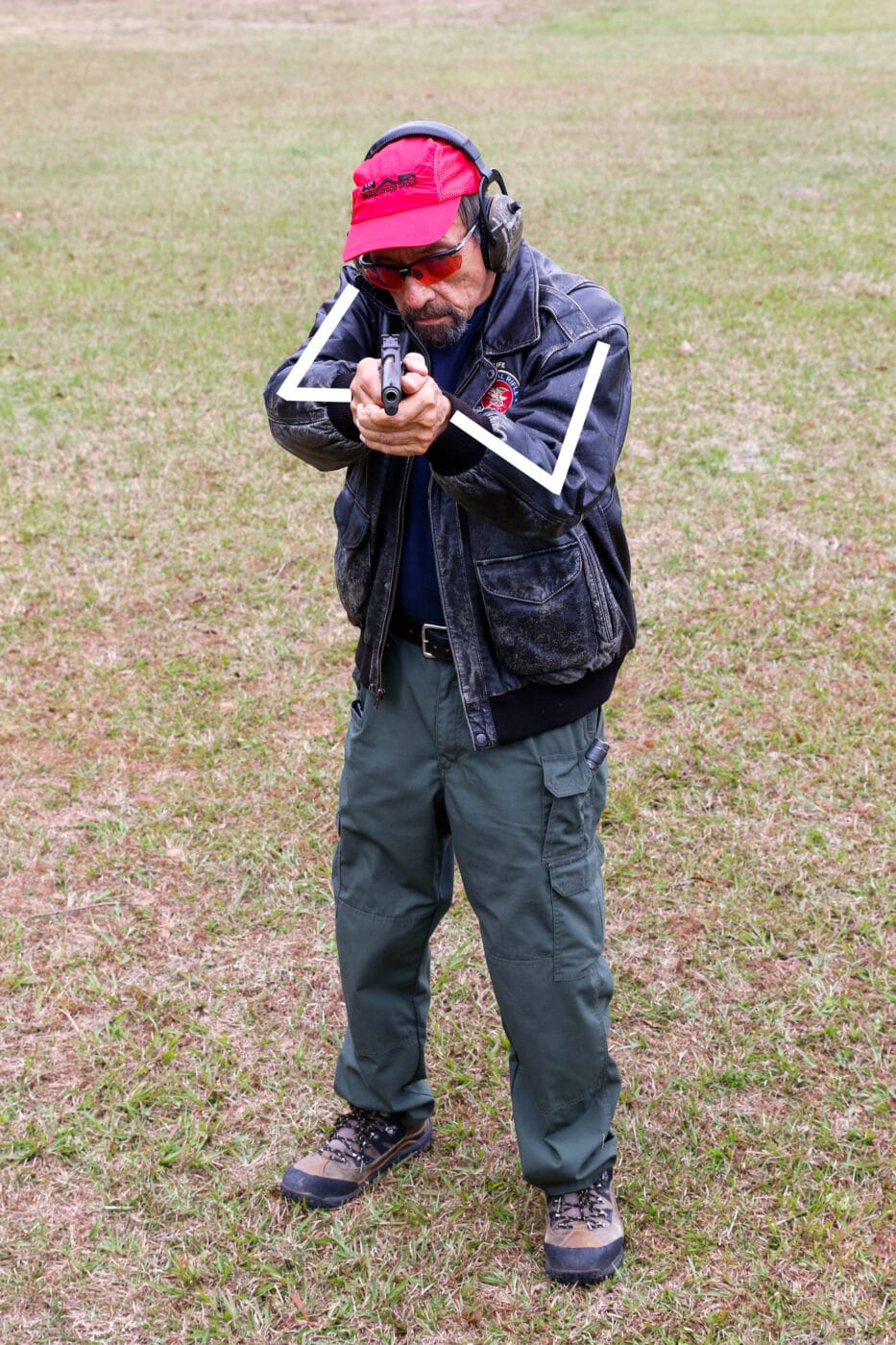
Remember, the term “stance” in this context does not involve just foot position. Upper body and upper limb placement may actually be more important. Again, in Weaver, this can be interpretive. In 1978, I watched Ross Seyfried win the IPSC National Championship near Los Angeles, with his Pachmayr Custom 1911 .45 in a very tight (close to the face) Weaver stance, and photos show he was shooting the same way when he won the World IPSC Championship in 1981 in Johannesburg. Murray Gardner, the great Canadian champion, reportedly shot in the same sort of tight Weaver. At the other end of the Weaver interpretation bell curve was John Shaw, whose elbows were barely bent on both arms when he won numerous titles.
The angle of arm bend is important. Col. Cooper was emphatic that the elbow of the support arm be pointed straight down. This better aligns the skeleto-muscular structure of the support arm for maximum strength to equalize “pull strength” with the “push strength” of the dominant arm, which isn’t called colloquially “the strong arm” for nothing. The bend angle of the gun arm seems less important, but this writer has noticed that keeping that elbow pointed downward also increases wrist strength and reduces the likelihood of a “limp-wrist malfunction” when shooting a semi-automatic pistol.
Perks and Quirks: Tips for Shooting Weaver
Every technique has strengths and weaknesses. This includes Classic Weaver. Among its strengths:
Very fast from draw to the shot: This is because, with elbows bent, less time is taken than fully extending the arms. In any time and motion study, a cornerstone element is the fact that motion takes time. Drawing from behind my right hip and measuring to the proximal joint of my trigger finger, my gun hand travels approximately 24.5” from “gun at rest in holster” to “gun on target and first shot” in Classic Weaver. With the gun arm at full extension, that measurement increases to 32.5”.
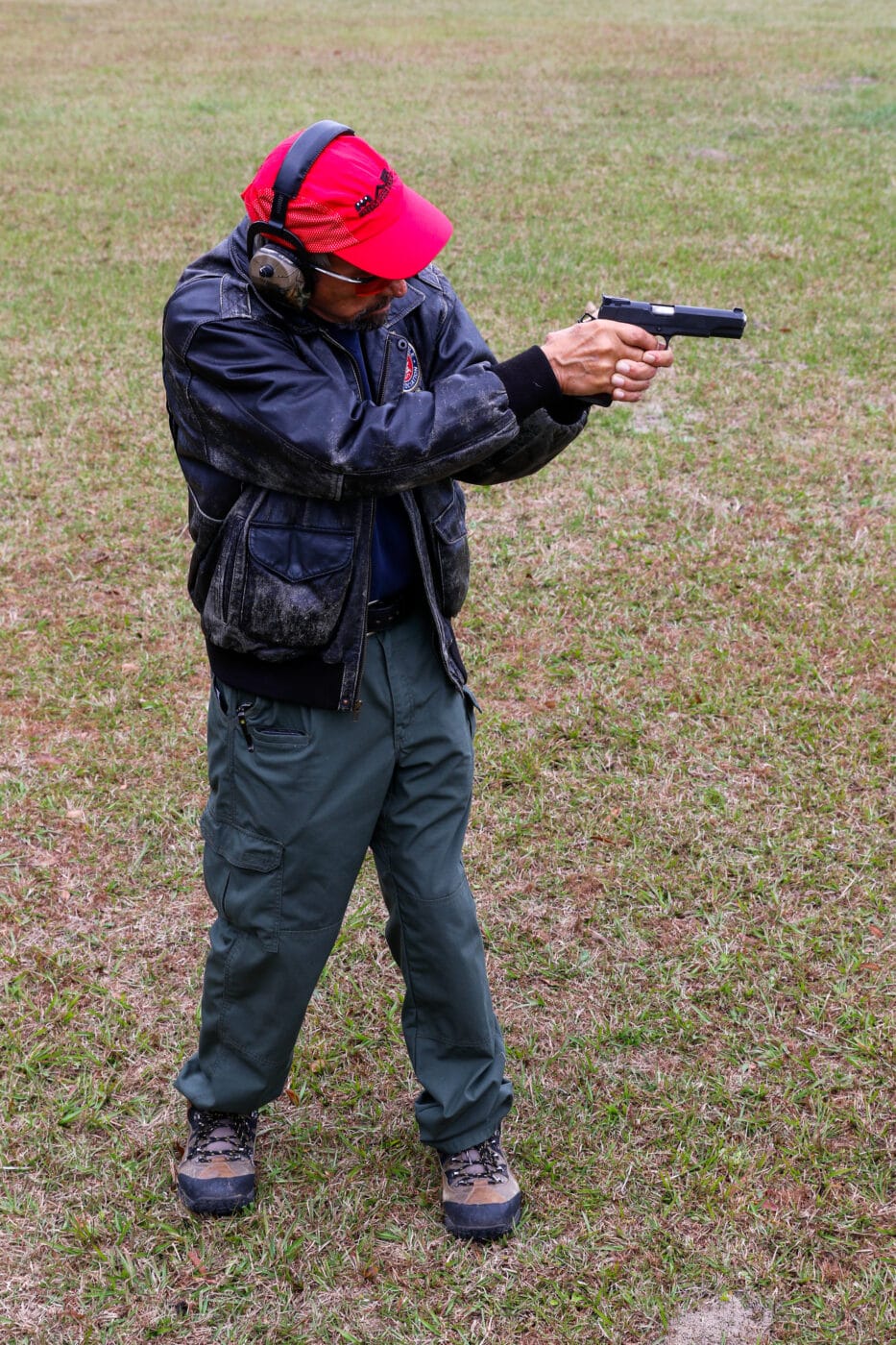
Very quick to track between multiple targets: The closer the gun is to the body, the less distance it has to travel to keep up with a laterally moving target or track between multiple targets. It’s a simple ARC (Axis, Radius, Circumference) Principle: your torso is the Axis, your gun arm(s) constitute the Radius, and the muzzle/front sight area of the handgun travels the Circumference. Less movement distance equals faster target engagement.
Helpful for students with certain physical challenges: With a locked gun arm, the shoulder has to be forward of the hip for good recoil recovery; otherwise, that shoulder becomes a fulcrum upon which the shooting arm rises, causing much longer recovery time between shots. However, we now have another generation of wounded warriors back from the front, many in wheelchairs and some of those paralyzed from the chest down: they can’t get their shoulders forward without pitching forward out of the chair. Because the isometric tension of the Classic Weaver creates a shock absorber effect in the bent arms, recoil is controlled between torso and hand(s) and is the one two-hand stance that can work well with the shoulders back. Moreover, elbow injury or bursitis or arthritis in the joint can make firing a powerful handgun with the arm locked out absolutely excruciating; the bent elbow alleviates pain and makes shooting tolerable.
Allows maximum rotation toward the shooter’s non-dominant hand side: The old advice of “step into your preferred stance to face the threat” falls apart when you’re on hostile ground surfaces or stairs, let alone seat-belted into an automobile or trapped in a wheelchair. By flexing the elbows ever tighter into Weaver, you can get close to 180 degrees behind you without moving your feet, and some flexible folks can get even farther. Imagine that you are trapped behind the steering wheel in traffic and see the armed carjacker coming up from the flank toward your driver’s side window.
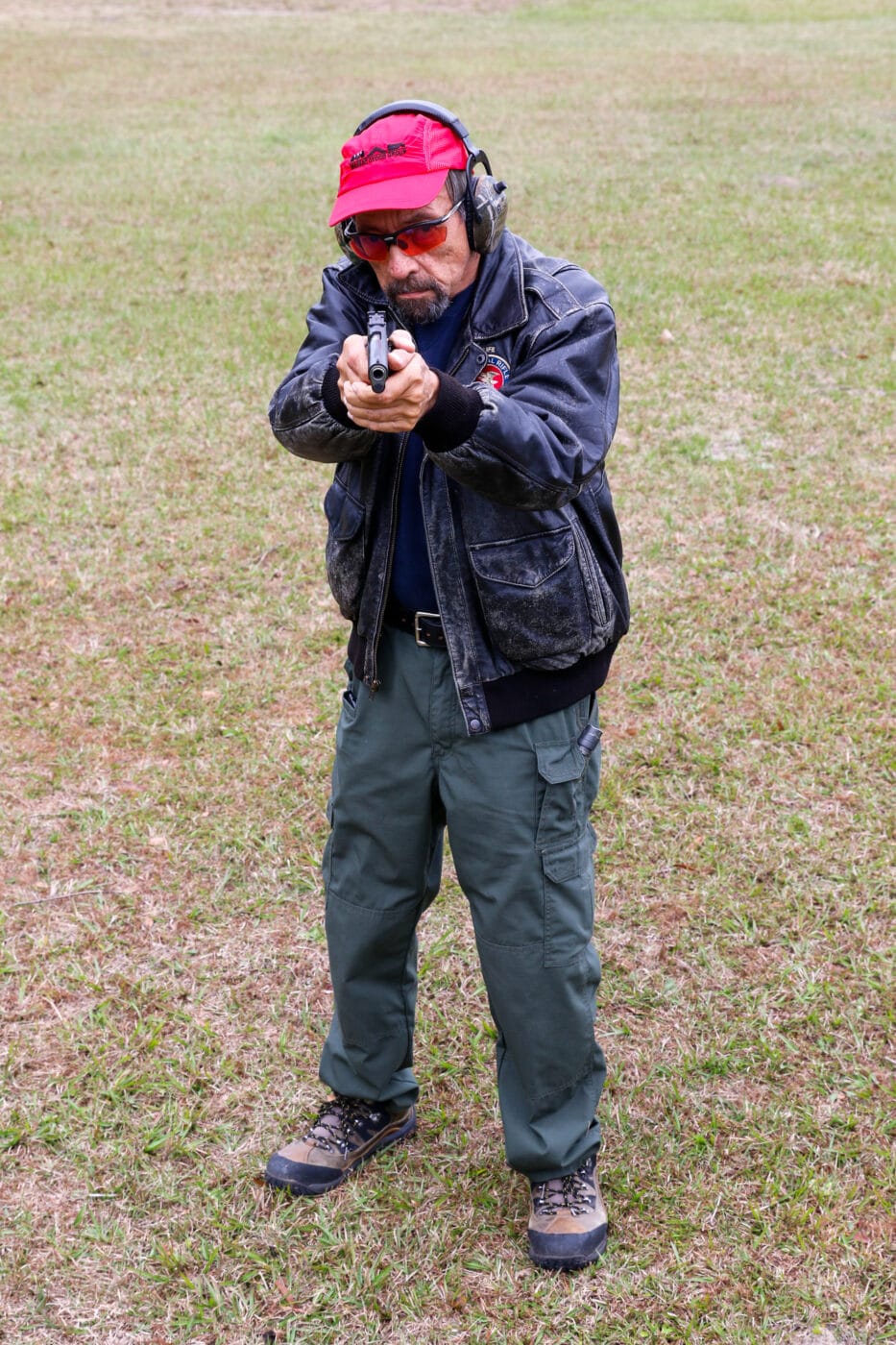
Adapts well to restrictive clothing: Even if you are wedded to an Isosceles stance, a tight-fitting tailored suit, or heavy winter garb, or some types of body armor can impede your getting into your favorite shooting position. The bent arms of the Classic Weaver, with less extension required, may work better for you.
Adapts well to shooting while moving: The shock absorption effect of the tensioned bent arms that helps control recoil with a perfectly executed Classic Weaver seems also to some degree to minimize “gun bounce” during shooting while moving. There’s also that ARC Principle at work, as discussed above, during moving while shooting.
Weaver Shooting Stance Downsides?
Of course, nothing is perfect. Downsides of this stance include the following:
Suboptimal for the body armor wearer: This stance pre-dated the ready availability of body armor for all-day wear, introduced by Richard Davis circa 1972. The bladed torso opens an unprotected “Achilles heel” area in the armpit and upper side, from the angle of a facing armed opponent, and this becomes worse the more the torso is bladed.
Somewhat dependent on arm strength, and is suboptimal for those limited in that regard: At my schools, we have seen many people who struggle with the Classic Weaver, particularly those with arm injuries and most of all with slender, willowy females who have limited upper body musculature. In my opinion, it rises to the level of disparate impact.
Seems to increase the need for ample hearing protection: As noted above, particularly with a “tight-in” Weaver such as the Seyfried interpretation, the gun is closer to the head and therefore closer to the ears. Many feel that this increases potential hearing damage.
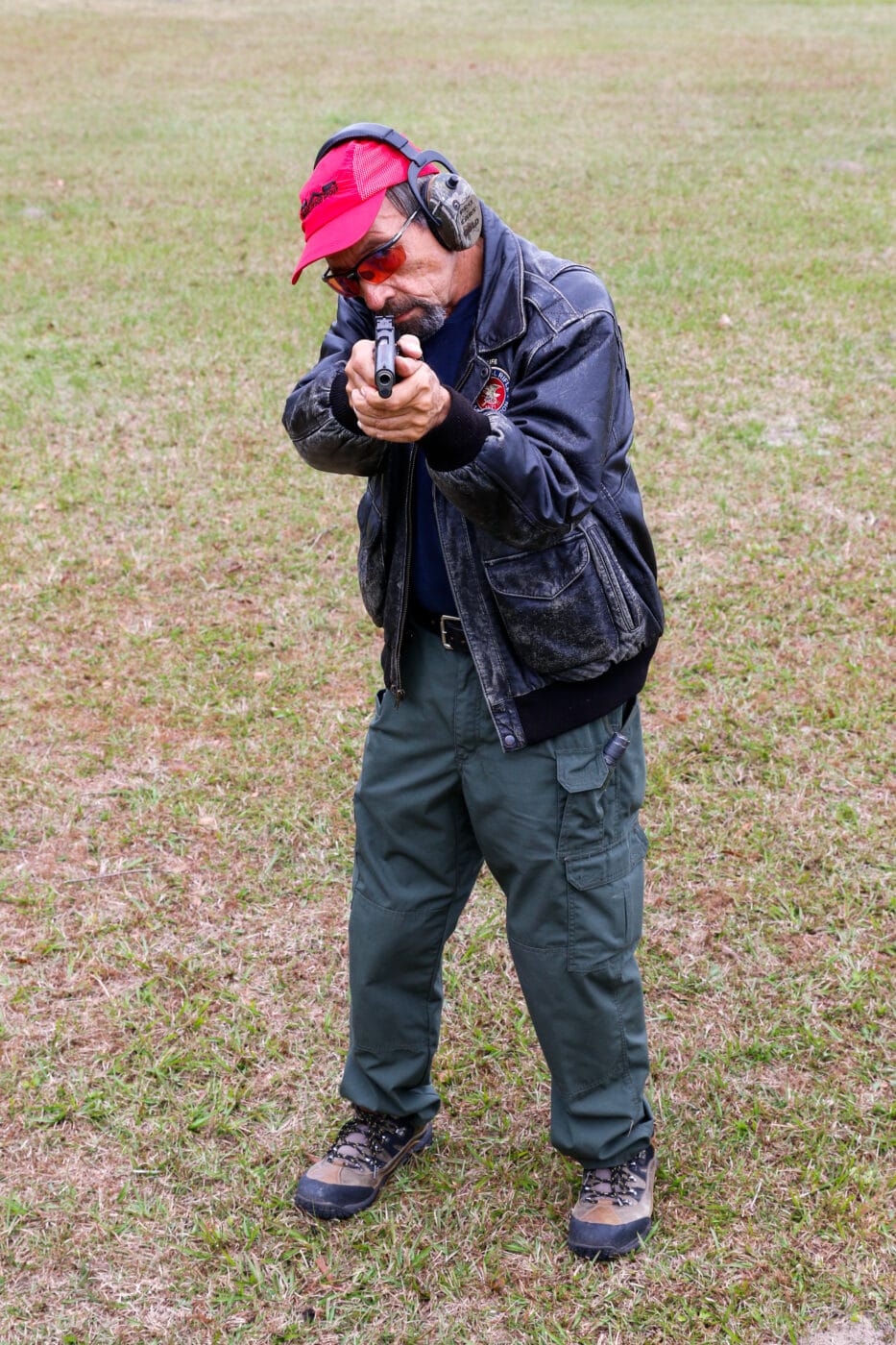
A “busy” technique: There are a lot of things you have to be doing right for Classic Weaver to work well with you. If the support-side foot is rearward instead of forward, you may feel awkward and off-balance, and will have a markedly limited traverse toward your dominant hand side. (Just as Classic Weaver is ideal for traverse toward the non-dominant side, it pays the price when you have to turn the opposite way to shoot, and can’t step into a better position.) If you push with the gun hand but don’t pull with the support hand, you’re likely to shoot low and toward your non-dominant side. Pull with the support hand but fail to push with the firing hand, and your shots may go high to the opposite side.
Does not adapt easily to the cross-dominant shooter If you are right-handed with a left master eye (or vice versa), the problem with Classic Weaver is that it brings the gun very much more toward the side of your body that is opposite from your dominant eye. The best correction for using this stance when cross-dominant seems to be dropping the ear toward the gun hand side shoulder, which tilts the opposite eye into alignment with the firing hand. However, this gives the non-dominant eye an excellent view of your own gun arm bicep area, but not at all the best danger scan of the scene in front of you that is causing you to shoot in the first place.
Conclusion
Though it has fallen out of favor with the “trendy” these days, the Classic Weaver stance has undeniable advantages, as noted above. However, it had enough shortcomings that many who tried it changed it in important ways. This brings us to the so-called Modified Weaver stance, which we’ll discuss in-depth in the next segment of this series.
Editor’s Note: Please be sure to check out The Armory Life Forum, where you can comment about our daily articles, as well as just talk guns and gear. Click the “Go To Forum Thread” link below to jump in and discuss this article and much more!
Join the Discussion
Featured in this article
Continue Reading
Did you enjoy this article?

 180
180




